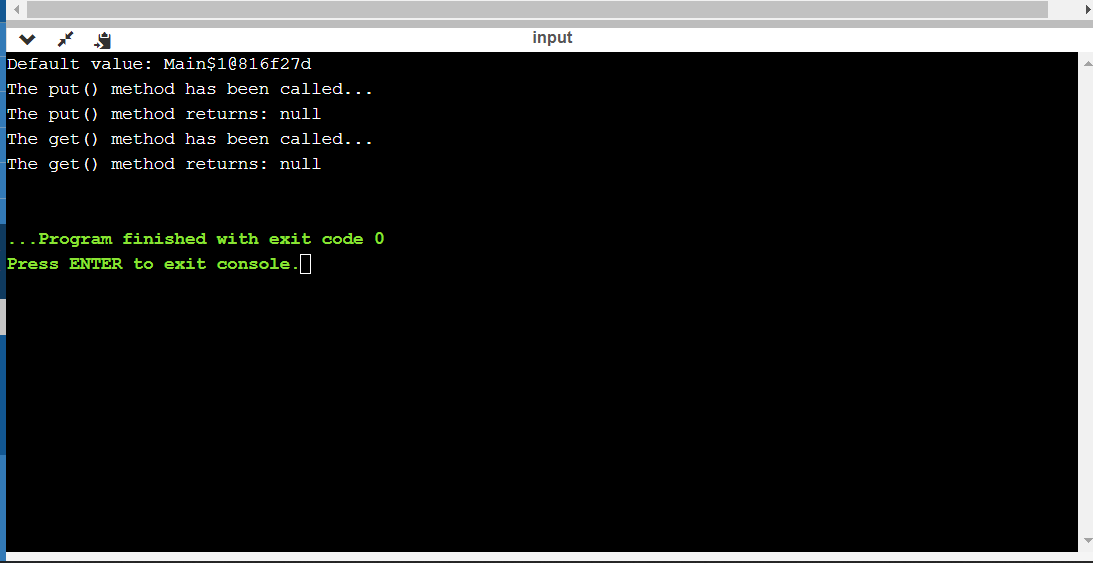Java的.net.ResponseCache类在Java中
Java的ResponseCache用于构造URLConnection缓存的实现,它指定必须缓存哪些资源以及需要缓存资源的持续时间。
可以通过执行以下操作使用系统创建 ResponseCache 实例:
ResponseCache.setDefault(ResponseCache)
使用上述语句创建的实例将调用 ResponseCache 的对象,以便:
- 用于将从外部源检索到的资源数据存储到缓存中。
- 用于根据请求获取已存储在缓存中的资源。
- 响应缓存可以通过Java.net包导入
java.net.ResponseCache
ResponseCache 类的方法:Method Description get(URI uri, String rqstMethod, Map This method is used for retrieving the cached response depending upon the requesting URI, request method and request headers. getDefault() This method is used for retrieving the system-wide cache response. put(URI uri, URLConnection conn) The protocol handler calls this method whenever a resource has been retrieved and the ResponseCache must decide whether to store the resource in its cache. setDefault(ResponseCache responseCache) This method is used to set or unset the system-wide cache
ResponseCache 类的应用:
1.在Java.net包中,ResponseCache用于实现各种网络应用的资源缓存,例如:
- 电子邮件
- 文件传输
- 远程终端访问
- 加载网页
java.net.ResponseCache
2. 在Java.net 中,ResponseCache 用于提取系统范围的响应缓存。
public static ResponseCache.getDefault()
3. 在Java .net 中,ResponseCcahe 用于设置或取消设置系统范围的缓存。
public static void ResponseCache.setDefault(ResponseCache responseCache)
用于实现Java .net.ResponseCache 的Java程序:
Java
import java.io.IOException;
import java.net.*;
import java.util.HashMap;
import java.util.LinkedList;
import java.util.List;
import java.util.Map;
public class JavaResponseCacheExample1 {
public static void main(String args[]) throws Exception
{
// passing the string uri
String uri = "https://www.onlinegdb.com";
// Calling the constructor of the URI class
URI uri1 = new URI(uri);
// passing the url
URL url = new URL("http://www.onlinegdb.com");
// calling the constructor of the URLConnection
URLConnection urlcon = url.openConnection();
ResponseCache responseCache = new ResponseCache() {
// calling the abstract methods
@Override
public CacheResponse get(
URI uri, String rqstMethod,
Map > rqstHeaders)
throws IOException
{
return null;
}
@Override
public CacheRequest put(URI uri,
URLConnection conn)
throws IOException
{
return null;
}
};
// The sets the system-wide response cache.
ResponseCache.setDefault(responseCache);
// The getDefault() method returns
// the system-wide ResponseCache .
System.out.println("Default value: "
+ ResponseCache.getDefault());
Map > maps
= new HashMap >();
List list = new LinkedList();
list.add("REema");
// put() method sets all the applicable cookies,
// present in the response headers into a cookie
// cache
maps.put("1", list);
System.out.println(
"The put() method has been called...");
// The put() method returns the
// CacheRequest for recording
System.out.println(
"The put() method returns: "
+ responseCache.put(uri1, urlcon));
System.out.println(
"The get() method has been called...");
// The get() method returns a CacheResponse
// instance if it is available
System.out.println(
"The get() method returns: "
+ responseCache.get(uri1, uri, maps));
}
} 输出 :
